August 8, 2025 | 03:20 GMT +7
August 8, 2025 | 03:20 GMT +7
Hotline: 0913.378.918
August 8, 2025 | 03:20 GMT +7
Hotline: 0913.378.918
Can Chu Phin is one of the most disadvantaged communes of the former Meo Vac district, located entirely within the core zone of the rocky plateau. From Meo Vac's center, it takes more than 20 kilometers of mountain roads to reach Can Chu Phin. Traveling an equal distance further leads to Khau Vai, which is the final point of Meo Vac, bordering the Nho Que River.
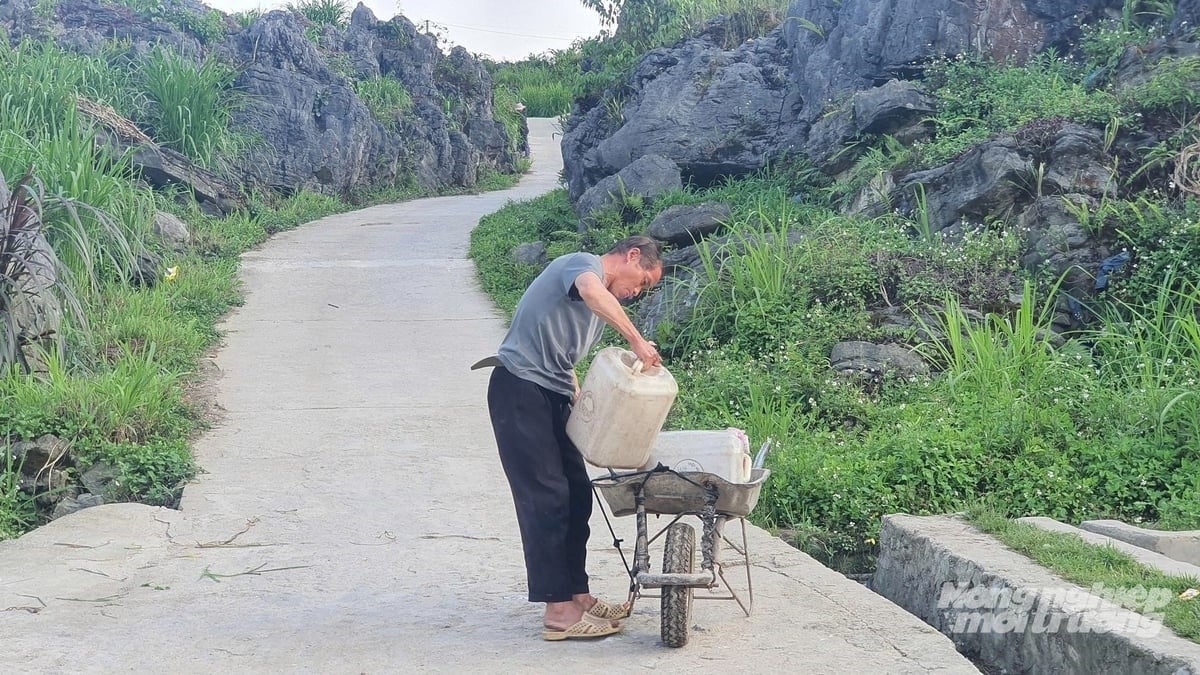
Can Chu Phin residents store every can of freshwater for daily use. Photo: Kien Trung.
Like many other rocky areas, Can Chu Phin also faces water shortages. During the dry season, locals must store every can of water and use it sparingly. In Can Chu Phin, domestic water is as scarce as rice. Yet while rice can be substituted with cornmeal (men men) during the lean months, there is no alternative when it comes to water. Difficult terrain, limited arable land, and the challenge of water sources have made it impossible for Can Chu Phin to “think big” when restructuring its crop and livestock systems. Without water, even the most promising poverty reduction models remain unworkable.
According to Lau Mi Va, former Deputy Secretary of the Can Chu Phin Commune Party Committee, before the administrative merger, the commune had 12 villages, 1,257 households, and about 7,000 residents, with poverty levels reaching as high as 70%. In an effort to reduce poverty, various projects were introduced to restructure local crops and livestock, including hybrid corn, rapeseed, and glutinous corn. However, none of them yielded success. Hybrid corn could grow but was prone to pests and weevils, making it difficult to preserve.
In recent years, Can Chu Phin has been promoting tourism based on the traditional culture of the Mong people, particularly by showcasing the uniqueness of their stone fences. Alongside support policies and transformation in farming and livestock production techniques, hunger and poverty have gradually receded. However, amid many concerns, the haunting fear of water scarcity still lingers.
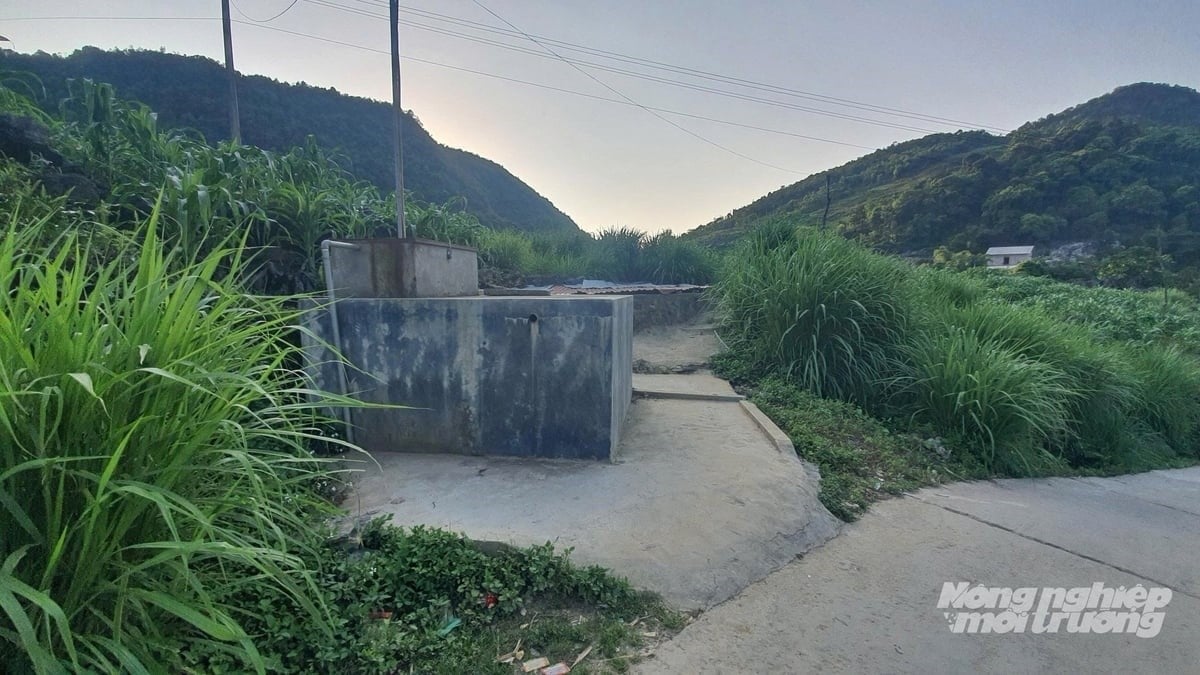
A domestic water storage tank in Ha Ia hamlet, Can Chu Phin commune, collects water from mountain streams and rainwater. Photo: Kien Trung.
Ho Pa Lua, head of Ha Ia hamlet, said that the State has supported local residents in building water storage tanks to prepare for drought periods, provided livestock such as buffaloes, cows, pigs, and chickens to boost production, and assisted in building houses. As a result, living conditions have gradually improved. Although the hamlet has 131 households, 84 of which are classified as poor, villagers still proactively contribute labor and donate land to build roads into the village.
At the center of Ha Ia hamlet, on the widest and flattest plot of land, stands a cluster of three above-ground concrete tanks with crisp, square edges. Each tank holds dozens of cubic meters of rainwater, providing a lifeline for the entire community. A smooth, brick-paved yard provides space for communal activities where villagers gather every afternoon. The cozy community space evokes familiar scenes from lowland villages in the 1990s, where people would come together under banyan trees, by village wells, or near temple ponds.
In these forested upland areas with water shortages, rainwater storage tanks like these are a fortune. In contrast, in the lowlands, where modern life brings tap water directly into homes, old water tanks are dismantled, and village wells are abandoned and forgotten.
This contrast highlights the distinct characteristics of each region. The gap in economic development between remote villages and lowland areas remains significant. That is why, in the remote villages where nature is harsh and infrastructure is limited, having water tanks like these is a dream.
The movement to build domestic water tanks and hanging reservoirs has been spreading across villages in the four upland districts of Quan Ba, Yen Minh, Dong Van, and Meo Vac on the rocky plateau. From just 30 initial reservoirs constructed in the 2007-2010 period, the State supported local communities in building an additional 99 reservoirs during 2013-2014. In the 2015-2020 period, another 194 reservoirs continued to be invested with the aim of fundamentally addressing domestic water shortages during the dry season. These efforts were part of a project called “Reservoir Project for the Four Northern Karst Mountain Districts” launched by Ha Giang. The project has carried the hopes of local residents.

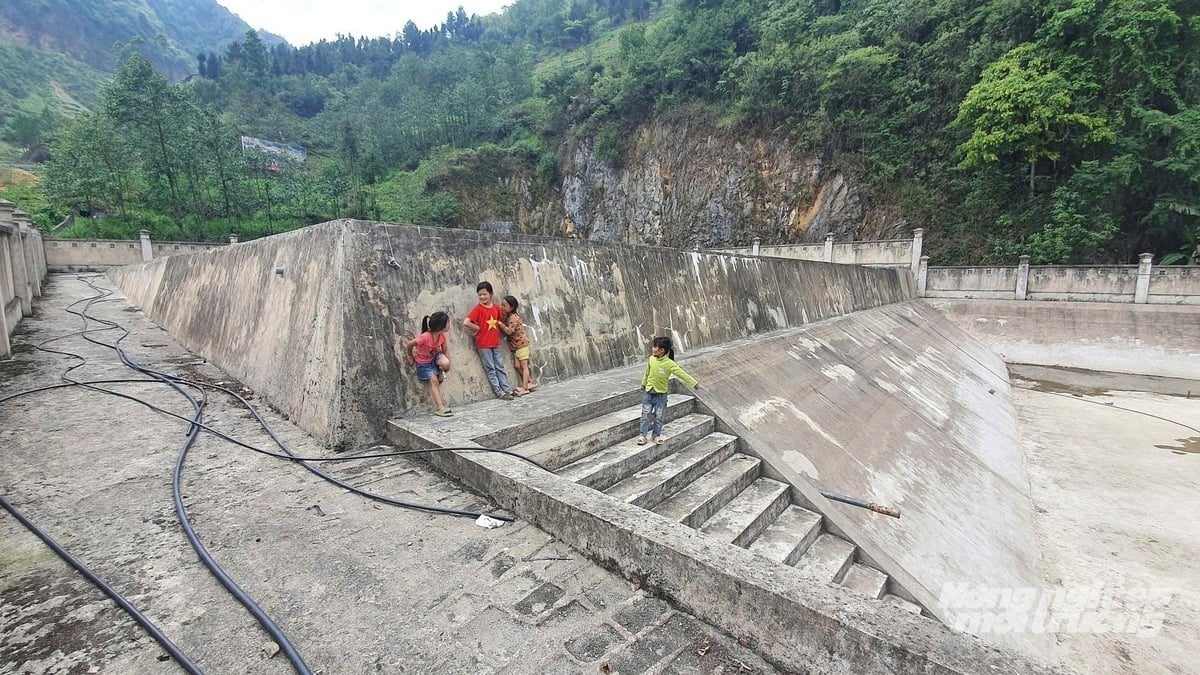
Children play by a hanging reservoir in Lung Cam hamlet, recently cleaned to prepare for water storage during the rainy season. Photo: Kien Trung.
In February 2012, the Ha Giang Provincial People's Committee held a conference to review three years of implementation of a scientific research project titled “Pilot Study on Water Supply Solutions for Particularly Disadvantaged Areas in the Northern Mountainous Region.” The study, led by Dr. Vu Cao Minh from the Institute of Geology under the Vietnam Academy of Science and Technology, successfully piloted the construction of two reservoirs in Sa Phin commune (Dong Van district) and Ta Lung commune (Meo Vac district) from 2006 to 2008. Professor and Academician Dang Vu Minh, President of the Vietnam Union of Science and Technology Associations, chaired the project acceptance council, which also included scientists from the Institute of Geophysics and the Institute of Geology (University of Mining and Geology).
According to the council's assessment, among the water collection methods currently used by local residents on the rocky plateau, such as pumping from caves, rivers, streams, or boreholes, extracting water from rock cliffs is considered the most widely applicable solution. The hanging reservoir model is considered the most applicable and replicable solution for limestone mountain regions, such as the rocky plateau.
Over the following five years (2007–2012), an additional 91 hanging reservoirs were built in dry areas, with a total investment of over VND 1,096 billion, which was an enormous figure for the early 21st century.
According to the design, 35 of the reservoirs have a storage capacity of less than 5,000 m³, while 42 reservoirs exceed 5,000 m³. Design consultants proposed three main structural types: single-layer reinforced concrete bottoms and rubble stone walls, which were applied to small and medium-sized reservoirs built on relatively stable foundations and reservoir walls.

A hanging reservoir near the Moon Rock Field in the Dong Van rocky plateau. Photo: Khuong Trung.
Two-layer reinforced concrete for the base and walls is used in large-capacity reservoirs where the foundation and reservoir walls are unstable, typically in areas with karst terrain and weak soil. Single-layer reinforced concrete is applied for medium- and small-capacity reservoirs where the base and walls are highly stable.
Water is collected by utilizing available year-round sources to construct gravity-fed systems that channel water into the reservoirs (where natural sources exist), or by building catchment systems at surface runoff points during rainfall, constructing terraces to capture surface water, and installing rainwater-catching roofs around the reservoir area.
Once completed, the reservoirs were handed over to commune authorities for management and operation. The communes, in turn, establish reservoir management teams to ensure proper use.
Ha Giang province considers the domestic water reservoir program in the four northern mountainous districts one of the most impactful initiatives ever undertaken to provide a stable, long-term, and sustainable solution to chronic water shortages faced by ethnic communities. The program also reflects the great attention of the Party and Government to people living in remote, rocky highland areas.
The construction of hanging reservoirs has generated significant impacts: improving the living conditions of local people, contributing to positive social transformation, fostering regional economic development, and strengthening political stability in the nation's border areas. They have also enhanced the ecological landscape and created favorable conditions for tourism development in the Dong Van Karst Plateau Geopark.
Translated by Thu Huyen

(VAN) Ho Chi Minh City and Hyogo Prefecture strengthen cooperation on green transition, creating opportunities for clean agriculture, environmental technology, and climate change adaptation training.
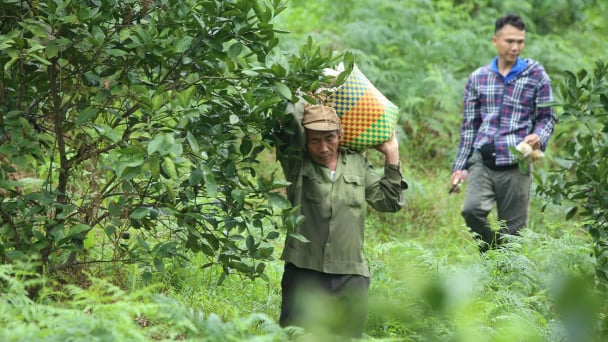
(VAN) With abundant water resources, North Central Vietnam is nurturing pineapple, tea, and citrus trees into sustainable brands, closely tied to resource management and a vision for development.
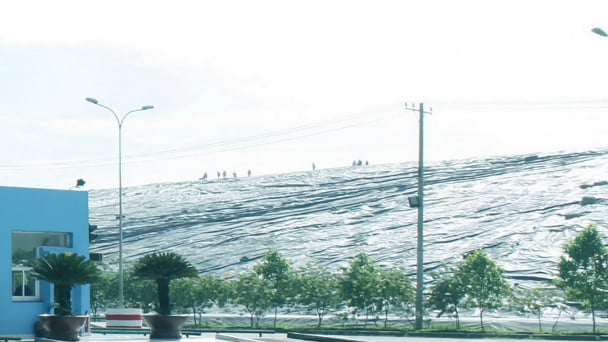
(VAN) Ho Chi Minh City is implementing a comprehensive set of measures to ensure that over 90% of municipal solid waste is treated using advanced, modern technologies by 2030.
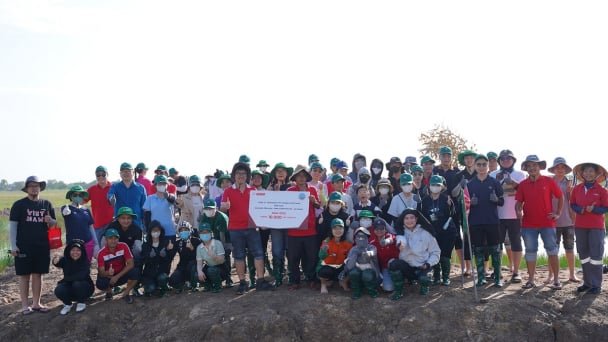
(VAN) INSEE Vietnam has planted 10,000 melaleuca trees at the Phu My Conservation Area, a new step in its goal to achieve a net positive impact on biodiversity by 2030.
![Sky-high reservoirs on rocky plateau: [1] ‘Water bags' at 2,000-meter altitude](https://t.ex-cdn.com/nongnghiepmoitruong.vn/608w/files/huyenvt (e)/2025/08/06/2024-1-160621_730.jpg)
(VAN) If the 'Happiness Road' is considered the first man-made heritage of the rocky plateau, then the hanging reservoirs at an altitude of 2,000 m might be its second.
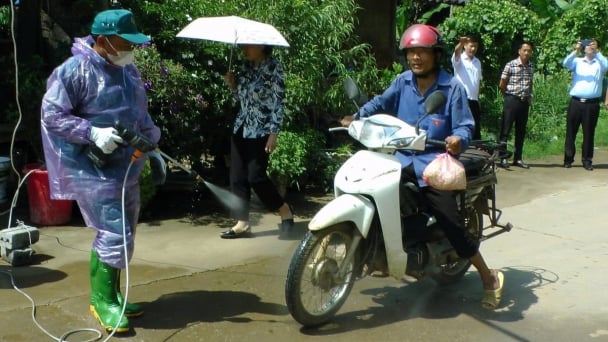
(VAN) On August 1, a working delegation from the Department of Livestock Production and Animal Health inspected ASF prevention and control work in Lao Cai.